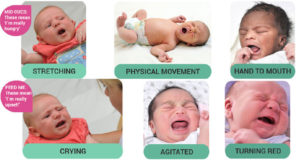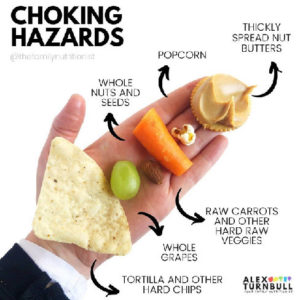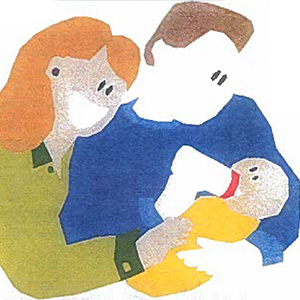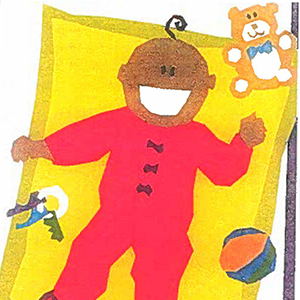HELP ME BE HEALTHY.
At this checkup:
- The nurse will weigh and measure me. I will get a check-up.
- I will get the next set of vaccines. Write down the date of these vaccines in my health journal. If I had a reaction to the vaccines before, tell the doctor.
- I should get a flu shot in the fall.
- The doctor might check my eyes for crossed eyes or a lazy eye.
- I might get a blood test to see if I have enough iron in my blood.
- Ask about my eating habits. Tell the doctor when and how much I eat.
- If I need them, I will get hearing aids. I might get help from my nearby Early Childhood Intervention program. An audiologist will check my hearing every few months until I’m a year old, and after that, every six months.
- Ask if I need fluoride supplements to help my teeth. Ask about my eating habits. Describe when and how much I eat.
Start feeding me vegetables and fruits.
At 6 months, I’m old enough to try vegetables and fruits. Start with vegetables. Try an orange vegetable like squash or sweet potatoes first. Give me only one new food each week. This way, if I have an allergy, you will know what food caused the allergy.
TAKE CARE OF MY TEETH.
- Start planning for my first dental visit for when I’m 6 months old or when my first tooth comes in.
- Call your dentist or a dentist just for me and set up my first visit.
- As soon as my teeth come in, gently brush my teeth with a little, soft-bristled toothbrush and some water.
- I should not have toothpaste now.
If you don’t have health insurance for me, call the Children’s Health Insurance Program (CHIP) toll-free at 1-877-543-7669 (1-877-KIDS-NOW) to find out about children’s health insurance.
KEEP ME SAFE.
When we ride in the car, put me in a car seat with the straps on right.
- My car seat is the safest place for me when I’m in the car.
- Until I’m a year old and weigh 20 pounds, my car seat should be in the back seat of the car and placed so I look out the back window.
- If you have questions about my car seat or how you put it in, call Safe Riders toll-free at 1-800-252-8255.
Put gates at the stairs so I don’t go up or down the stairs. After you make our house safe for me, teach me to be safe.
- Tell me what you want me to do, over and over. Don’t get tired of telling me. I’m too young to remember.
- Until I learn what to do, take me away from the place I shouldn’t be or take away the thing I shouldn’t be playing with. Get me interested in something else. Don’t slap my hands or hit me. Try not to yell at me, either.
- Tell me, hug me, and praise me when I do what you want.
Help me use the high chair safely.
- Put the safety belt on me when I’m in the chair.
- Be sure the tray is locked in place. Make sure my hands are out of the way when you lock the tray in place.
- Be sure there are no sharp edges to cut me or you
- Don’t let me stand in the chair.
- Don’t leave me alone in the chair.
- Don’t leave the chair too close to a table or counter. I can push on the table and tip my chair over.
PLAY WITH ME, IT HELPS ME LEARN.
- Talk to me in complete sentences. Tell me what you are doing. Make sounds for me to copy like “eee,” “uh-oh,” and “aaa.”
- Tell me about a toy and show me how to use it. I will want to look at it, smell it, chew it, squeeze it, pat it, and bang it.
- Put a favorite toy just out of my reach. Help me move to get to it.
- Hide a toy under a cloth so I can look for it.
- I like to use blocks that I can hold in my hands.
- Read to me. Point to the pictures as you tell me about them.
Each child grows and changes at a different rate.
I might do some activities earlier than others. Playing with me helps me learn new things. If you are worried about what I do, talk to my doctor or nurse or call the OARS Help Line toll-free at 1-800-628-5115.
Watch for me to:
- Pick up my head and chest when I’m on my stomach. I can hold myself up with my arms.
- Stand up if you hold me under my arms.
- Roll from my stomach to my back or from my back to my stomach.
- Notice small things that are placed in front of me.
- Reach for toys or other interesting things near me.
- Squeal and make high pitched sounds when I’m happy.
- Start to have my teeth come in.
- Lie on my back and look at my hands. I can bring my hands together over my chest or at my mouth.









